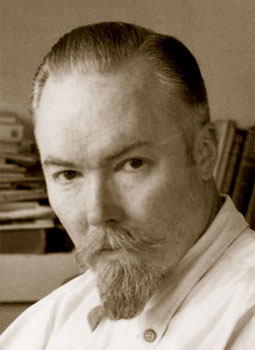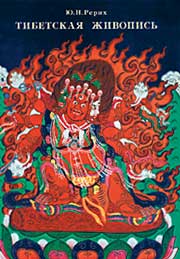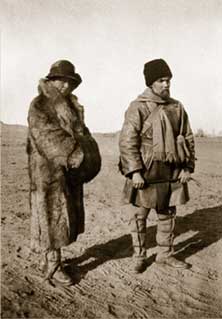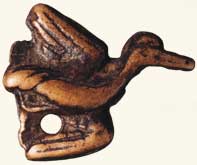Young Roerich’s paintings and graphics executed during his school years testify to the broadness of his interests and his versatile talents, as well show Yuri’s artistic gift. Having finished the Karl May Gymnasium, he entered the Indian and Iranian Department of the Oriental Languages School at London University. His outstanding abilities for languages were so obvious that he was introduced as the best Sanskrit student to the Secretary of State for Indian Affairs who came to visit the University. In September of 1920, Yuri Roerich together with his parents left for the USA. There he entered Harvard University, in the Indian Philology Department, at the same time he took up Pali Chinese languages. His purposefulness was striking: at the age of 18 he was already a formed Orientalist having his own subject and his own trend in science.
After graduating from Harvard University with a Bachelor and Master degree, Yuri Roerich continued his education in France, in the School of Oriental Languages at the University of Paris. He worked for a year at the Central-Asian, Mongolian and Tibetan Departments of this University, and at the same time studied at the Military Department and Department of Law and Economy. In 1923, Y. Roerich graduated from the University of Paris and received a Master’s degree in Indian Philology. At the age of 21, Yuri Roerich had already started an independent scientific research work. Since that moment, all his further scientific activities became permeated by high humanist aspirations. In 1923, the Roerichs family moved to India. There started the first stage of the Central Asian expedition organized by N. Roerich. After a short time, but a very tight and long distance of their traveling around India (December of 1923), in 1924, Yuri Roerich together with his family undertook minor expeditions around Sikkim – a country of snowy giants and ancient monasteries – and Bhutan, a territory in the Eastern Himalayas. The result of these journeys was a brilliant monographic work – “Tibetan Painting” (Paris, 1925). This scientific study completed by Yuri Roerich at the age of 23 is unique, as no other similar works had ever been written at that time or at present. Decades later, the modern republication of this study, undertaken by the International Center of the Roerichs in 2002, would become highly appreciated by the 14th Dalai-Lama.
From 1925 to 1928, Yuri Roerich occupied the main stage of the Central Asian expedition. Yuri Roerich, despite his young age, was entrusted to take care of the expedition’s safety. There, his knowledge of military science proved more than useful. Not only once Yuri Roerich’s tactical skills and personal courage saved the caravan. In addition to this, he acted as a translator, by speaking perfect Mongolian and other Tibetan languages, as well as a number of Central Asian dialects. This allowed him to communicate with the local population and was of inestimable scientific use. It would not be an exaggeration to say that without Yuri Roerich, it would not have been possible to solve many of the tasks that awaited the Central Asian expedition.
The unique achievements of the expedition were reflected in Y. Roerich’s monographic work “Along the Paths of Central Asia” (London, 1931) which immediately placed the young researcher within the ranks of the scientists-pioneers of Asia. Yuri Roerich described in his study “Beast Style Among Nomads of North Tibet” (Prague, 1930) the discovery during the Central Asian expedition of menhirs, cromlechs and stone graves – an occurrence that became a significant event in scientific world. L. Goumilev wrote: “ Yuri Roerich’s study of the “beast style” in Tibet, which long ago became a bibliographic rarity, is quoted by all historians of the Scythian and Sarmat art as a composition that made an epoch in science”[2].
|
| |||||||||||||||||||||||||||
Copyright © 2008-2024 ST. PETERSBURG BRANCH OF THE INTERNATIONAL CENTER OF THE ROERICHS
Life and creative work of Nicholas Roerich | Exhibitions | Excursions | Scientific research | Protection of the Roerichs' name and heritage





